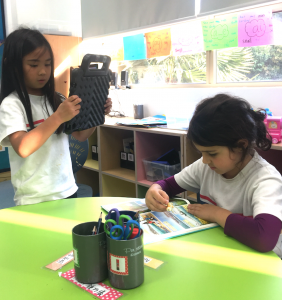Written by: Andrea Griego, Student Support Coordinator
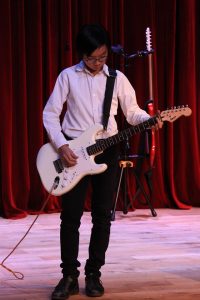 Kevin Du, who is in Year 10, the first year of the IGCSE Programme at Century Park Campus, has found his passion for language and music in and outside of the classroom. Kevin, a former EAL student, is now leading the YCIS Media team, but also finds time to play and build his own guitar. Although very busy, Kevin was gracious enough to share his story and passions with us.
Kevin Du, who is in Year 10, the first year of the IGCSE Programme at Century Park Campus, has found his passion for language and music in and outside of the classroom. Kevin, a former EAL student, is now leading the YCIS Media team, but also finds time to play and build his own guitar. Although very busy, Kevin was gracious enough to share his story and passions with us.
So Kevin, when did you begin school at YCIS?
I came to YCIS in Year 6, when I was 10 years old.
 I hear you were once an EAL student. Tell us more about your journey to English proficiency?
I hear you were once an EAL student. Tell us more about your journey to English proficiency?
Before I was in YCIS, I spoke Chinese all the time, and very little English. When I came to YCIS in Year 6, I was a terrible English speaker, and I avoided talking to friends and teachers, because I was afraid I would embarrass myself. Learning a new language was not easy, and it took me over a year to move to the mainstream English class. Thankfully, I had really encouraging English teachers who were very patient with me. They taught me a lot over the course of Year 6. I wouldn’t say I’m an expert in English speaking now, but I’m definitely getting better.
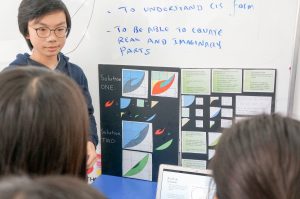 What is YCIS media for those of us who don’t know?
What is YCIS media for those of us who don’t know?
YCIS Media is a team of students who provide the school with school news. Every Friday, we present a video to the school, going over events that happened during the week, as well as things to look forward to coming up. We often do interviews with students and teachers, take video footage from school events, and we always try to make our videos entertaining and connected with student life.
 Wow Kevin, what a great accomplishment to lead this Media team. I hear you have another passion, music. How did you become interested in music?
Wow Kevin, what a great accomplishment to lead this Media team. I hear you have another passion, music. How did you become interested in music?
I started playing the piano when I was 6 years old. I started learning the guitar in Year 6, and my music teacher taught me drums in recent years. I love playing music, I love listening to music, and the main reason for that is because when I’m stressed, it makes me more relaxed, and gets my mind off of homework and tests. I plug in my guitar and just play around with it. My music teachers introduced me to writing my own music, which is also loads of fun.


Your guitar seems to be very special to you. What was your inspiration for designing your own guitar?
Ever since I started playing the guitar, I got really into it, and I’ve been checking out different brands of guitars for years. It had always been my ambition to build my guitar. We had this DT project last year, where we could use bamboo to make anything we wanted, so I chose to build a guitar. I’m still working on it, but it’s definitely looking awesome.
 Good luck with the completion of your guitar. Now for the most pressing question, tell us, what is your favorite thing about YCIS?
Good luck with the completion of your guitar. Now for the most pressing question, tell us, what is your favorite thing about YCIS?
My favorite thing about YCIS, especially this campus, is that it is a very close community. I quite like this because you can know the people in your class better, and have more time with each of your friends. Each of us also receive more attention from the teachers, and we are provided with more opportunities in different parts of school life. For example, I am quite involved in the music department, and I am always given a chance to interact with music teachers, to play in a group ensemble, and to perform on stage when there is a concert.
 Thanks for talking with us, but I have one final question: What is one thing that Primary YCIS students should know about Secondary?
Thanks for talking with us, but I have one final question: What is one thing that Primary YCIS students should know about Secondary?
So the one thing I want Primary students to know is that they shouldn’t be afraid of Secondary, because you start little by little, no one expects you to be an expert in Year 7. Secondary is a learning process. Just get as involved as you can, try your best in classes, and do the CCA’s that you enjoy.
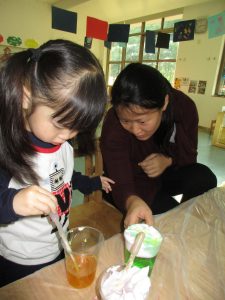 Suzanne Vert is a teacher in the ECE who was chosen to be interviewed for the digital library project she has started this year. It began as a goal she has set for herself within the K2 classroom and it seems that this is taking on another dimension.
Suzanne Vert is a teacher in the ECE who was chosen to be interviewed for the digital library project she has started this year. It began as a goal she has set for herself within the K2 classroom and it seems that this is taking on another dimension. 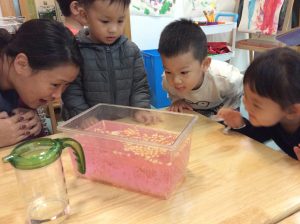
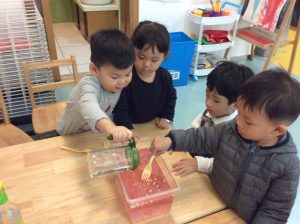

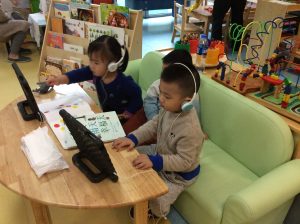
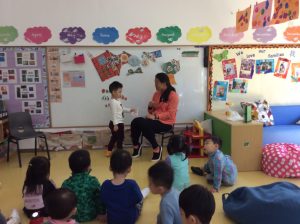

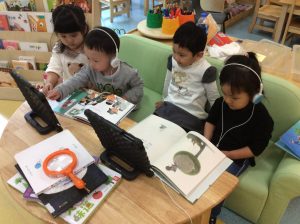
 I’m from California. I came to Shanghai in 2006. Right after completing my Bachelor’s Degree in Neurobiology, Physiology, and Behavior, I gained a teaching position at a Chinese Private School where I taught for 8 years before joining the YCIS team.
I’m from California. I came to Shanghai in 2006. Right after completing my Bachelor’s Degree in Neurobiology, Physiology, and Behavior, I gained a teaching position at a Chinese Private School where I taught for 8 years before joining the YCIS team.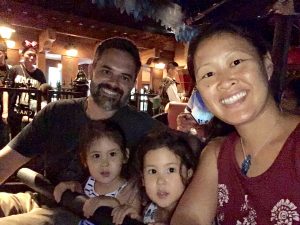 Actually, not really. I am used to working with students and setting rules. For this age-level, schedules and routines are essential. Once they are clear about these, then they thrive. We teach students independence and we emphasise positive behavior management. The children at this age love to be encouraged and rewarded when they make good choices and I’ve found that enforcing that behaviour brings out the positives in all the children. They are so eager and excited to learn that they quickly pick-up things. I am a high energy person and I love to make it fun for them so this is the perfect fit.
Actually, not really. I am used to working with students and setting rules. For this age-level, schedules and routines are essential. Once they are clear about these, then they thrive. We teach students independence and we emphasise positive behavior management. The children at this age love to be encouraged and rewarded when they make good choices and I’ve found that enforcing that behaviour brings out the positives in all the children. They are so eager and excited to learn that they quickly pick-up things. I am a high energy person and I love to make it fun for them so this is the perfect fit.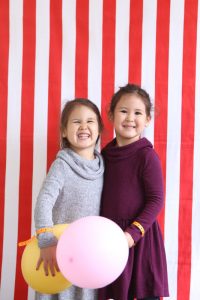 Coming from a non-educational background initially, I am eager to learn more and become a stronger teacher. This profession is incredibly rewarding because teachers are so vital in developing adults that feel empowered and can make a difference. Teachers that are continuously learning to create strong environments for learning are so influential.
Coming from a non-educational background initially, I am eager to learn more and become a stronger teacher. This profession is incredibly rewarding because teachers are so vital in developing adults that feel empowered and can make a difference. Teachers that are continuously learning to create strong environments for learning are so influential.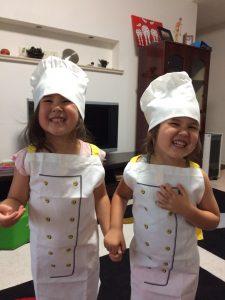 As an ECE teacher, you learn so much. My main goal is to know if I am encouraging children to push themselves for discovery and answers. I also need to keep learning as I want to be able to provide tools to encourage children to do this. Sometimes, we may not know the answer and we need to take a path to discovery. If we teach children how to find answers, this is a skill that they can use for the rest of their life.
As an ECE teacher, you learn so much. My main goal is to know if I am encouraging children to push themselves for discovery and answers. I also need to keep learning as I want to be able to provide tools to encourage children to do this. Sometimes, we may not know the answer and we need to take a path to discovery. If we teach children how to find answers, this is a skill that they can use for the rest of their life. In one of our Professional Development meetings, we were shown a video that was talking about the future in jobs. They spoke about how the jobs available now will be gone in 5 years because of how much the world is moving forward. This was an eye-opener for me to realize that these kids will live in such a different world than what we know and that we need to foster the love of learning so that our children can adapt in the world of tomorrow.
In one of our Professional Development meetings, we were shown a video that was talking about the future in jobs. They spoke about how the jobs available now will be gone in 5 years because of how much the world is moving forward. This was an eye-opener for me to realize that these kids will live in such a different world than what we know and that we need to foster the love of learning so that our children can adapt in the world of tomorrow.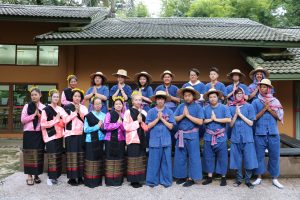 My recent adventure on our school trip to Thailand was twelve days filled with a roller coaster of emotions. These ranged from the excitement of trying new things, such as finally finding out the results of our river study, to the fear of taking risks, like when we went zip lining, pushing ourselves off the edge of the high platform and sailing through the air, courageously exiting our comfort zones.
My recent adventure on our school trip to Thailand was twelve days filled with a roller coaster of emotions. These ranged from the excitement of trying new things, such as finally finding out the results of our river study, to the fear of taking risks, like when we went zip lining, pushing ourselves off the edge of the high platform and sailing through the air, courageously exiting our comfort zones. The EOTC trips, which YCIS Secondary students go on from Year 7 up to Year 10, and the Seeds of Hope trip in Year 11, prepares students for the Thailand Trip in Year 12 (by then, parents too are also prepared for their child being away from home for so long!) Ever since my first EOTC in Year 7, I have been impatiently waiting for the Thailand Trip.
The EOTC trips, which YCIS Secondary students go on from Year 7 up to Year 10, and the Seeds of Hope trip in Year 11, prepares students for the Thailand Trip in Year 12 (by then, parents too are also prepared for their child being away from home for so long!) Ever since my first EOTC in Year 7, I have been impatiently waiting for the Thailand Trip.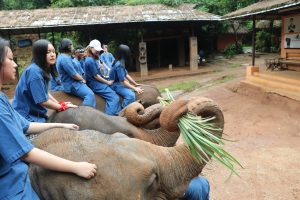 Starting the trip with three days of river studies, we applied our knowledge from the classroom in collecting data from river sites. The Biology students explored vegetation in the surrounding area of the river, whilst the Environmental Sciences and Societies students studied organisms in the river. The Geography and Physics students collaborated to measure the rivers flow, current speed within its dimensions. It was impressive to see so many academic disciplines coming to work together.
Starting the trip with three days of river studies, we applied our knowledge from the classroom in collecting data from river sites. The Biology students explored vegetation in the surrounding area of the river, whilst the Environmental Sciences and Societies students studied organisms in the river. The Geography and Physics students collaborated to measure the rivers flow, current speed within its dimensions. It was impressive to see so many academic disciplines coming to work together.

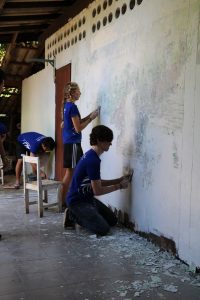 We then spent the next couple of days carrying out various other activities. The most impressionable one for me was definitely riding the elephants, as well as the unique experience of leading a veterinarian check on one of the elephants. We also learnt about the history of Thailand, broadening our knowledge and exploring a new subject for those who didn’t study History in IGCSE or IB. The trip ended with community service, in which we helped to renovate a local school’s kitchen, getting our hands and clothes very dirty. Thankfully, we were well fed for our hard work!
We then spent the next couple of days carrying out various other activities. The most impressionable one for me was definitely riding the elephants, as well as the unique experience of leading a veterinarian check on one of the elephants. We also learnt about the history of Thailand, broadening our knowledge and exploring a new subject for those who didn’t study History in IGCSE or IB. The trip ended with community service, in which we helped to renovate a local school’s kitchen, getting our hands and clothes very dirty. Thankfully, we were well fed for our hard work!
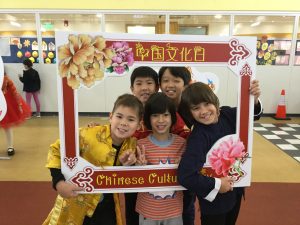

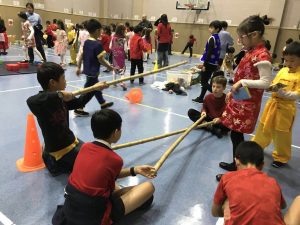
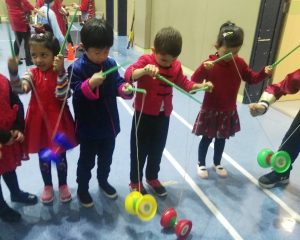
 In Primary Chinese Studies classes, students will learn about more than 10 different topics and will experience key aspect of Chinese culture every year. For example, the celebration of Chinese festivals is the highlight in Year 1. While students in Year 2 will learn more aspects of the Chinese culture such as festival customs, ethnic culture, Chinese geography, traditional games, drama perception etc. Students in Year 3 will start digging into the lifestyle of local Shanghainese and will have a field trip to the local dim sum shop and explore Qibao Old town. Building on the knowledge gained in Year 3, Year 4 students will learn about local traditional architecture—Shikumen, and will have the chance to visit the real Shikumen buildings and experience the lifestyle of old time Shanghai in the Songjiang Movie Park. Students in Year 5 will learn Chinese history in class, and will visit Jinshan village where they will be able to experience directly the villagers’ painting process. Students in Year 6 will learn about the “Silk Road Trade” and will go to the Shanghai Museum to discover the history of pottery.
In Primary Chinese Studies classes, students will learn about more than 10 different topics and will experience key aspect of Chinese culture every year. For example, the celebration of Chinese festivals is the highlight in Year 1. While students in Year 2 will learn more aspects of the Chinese culture such as festival customs, ethnic culture, Chinese geography, traditional games, drama perception etc. Students in Year 3 will start digging into the lifestyle of local Shanghainese and will have a field trip to the local dim sum shop and explore Qibao Old town. Building on the knowledge gained in Year 3, Year 4 students will learn about local traditional architecture—Shikumen, and will have the chance to visit the real Shikumen buildings and experience the lifestyle of old time Shanghai in the Songjiang Movie Park. Students in Year 5 will learn Chinese history in class, and will visit Jinshan village where they will be able to experience directly the villagers’ painting process. Students in Year 6 will learn about the “Silk Road Trade” and will go to the Shanghai Museum to discover the history of pottery.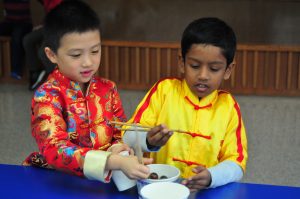

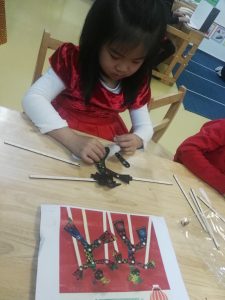

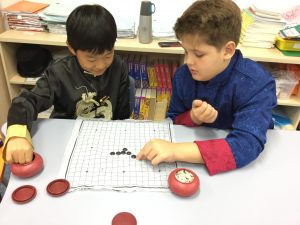

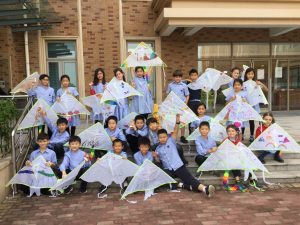
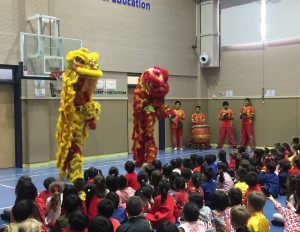



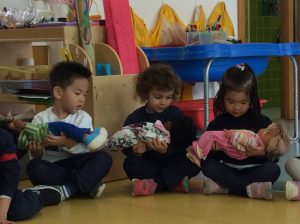

 Music helps children learn in a way that is fun and engaging. It is a great way to explore language for second and third language learners as they can explore different sounds, rhymes, and sentence structures as they learn new songs to familiar tunes. In ECE we often sing, “Everybody Wash Your Hands” “Sit down, sit down, sit down on the floor” “We are walking, going outside/to the gym/very slow.” Singing a song helps the children understand that there is a transition change and the repetition of the words helps to develop vocabulary.
Music helps children learn in a way that is fun and engaging. It is a great way to explore language for second and third language learners as they can explore different sounds, rhymes, and sentence structures as they learn new songs to familiar tunes. In ECE we often sing, “Everybody Wash Your Hands” “Sit down, sit down, sit down on the floor” “We are walking, going outside/to the gym/very slow.” Singing a song helps the children understand that there is a transition change and the repetition of the words helps to develop vocabulary. In Music classes the teachers introduce many new instruments and give children time to feel them and explore the sounds that they can make on a drum, violin or even a triangle. This allows children to be successful in playing their own piece of music; building upon success and giving children the confidence to move forward in their musical education.
In Music classes the teachers introduce many new instruments and give children time to feel them and explore the sounds that they can make on a drum, violin or even a triangle. This allows children to be successful in playing their own piece of music; building upon success and giving children the confidence to move forward in their musical education. When we started planning our 1-to-1 technology programme, we started with the learning. At YCIS Pudong, our vision of successful learning is one where students are engaged, critical, reflective, and active. We believe that our choice of iPads reflects this vision, allowing our students to be engaged, to collaborate, to reflect in the moment, and to be active learners, both within and beyond the classroom walls.
When we started planning our 1-to-1 technology programme, we started with the learning. At YCIS Pudong, our vision of successful learning is one where students are engaged, critical, reflective, and active. We believe that our choice of iPads reflects this vision, allowing our students to be engaged, to collaborate, to reflect in the moment, and to be active learners, both within and beyond the classroom walls.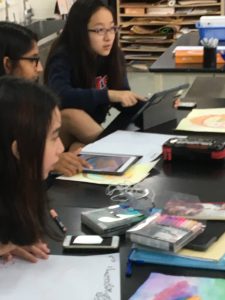

 In PE, iPads have been used to help improve performance by offering immediate feedback to our young athletes on their performance of key skills. Using a delayed camera app, iPads stream footage of students to the big screen in the gym, which allows our teachers to focus on individual performances and offer feedback that is unique to that student. By seeing their performance, the student can really appreciate the feedback and visually see where they can improve. Above all, it also provides lots a fun, laughs, and enjoyment to our lessons.
In PE, iPads have been used to help improve performance by offering immediate feedback to our young athletes on their performance of key skills. Using a delayed camera app, iPads stream footage of students to the big screen in the gym, which allows our teachers to focus on individual performances and offer feedback that is unique to that student. By seeing their performance, the student can really appreciate the feedback and visually see where they can improve. Above all, it also provides lots a fun, laughs, and enjoyment to our lessons.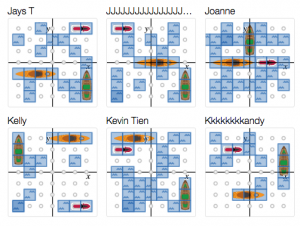
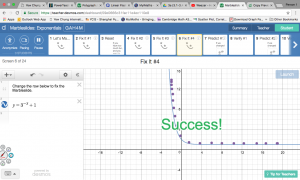


 In Art, all year levels use their iPads regularly to record and photograph ongoing and completed work. As student work on projects, they regularly save their progress in the Photo Library, creating a real-time portfolio. Our Art teachers are able to see all changes and evidence of reflection and refinements. It also makes thinking visible. Each student’s best ideas can be curated and printed for their sketchbooks, and an overview of their photo library can be used as evidence for assessment. Students also use apps to photograph drawn and painted work, and then apply more filters, which allows students to take risks by trying out new ideas before they rework the physical work. The iPads are also great as a generative tool for ideas working between digital and traditional materials. Having personal devices has transformed our workflow as everything connects more organically.
In Art, all year levels use their iPads regularly to record and photograph ongoing and completed work. As student work on projects, they regularly save their progress in the Photo Library, creating a real-time portfolio. Our Art teachers are able to see all changes and evidence of reflection and refinements. It also makes thinking visible. Each student’s best ideas can be curated and printed for their sketchbooks, and an overview of their photo library can be used as evidence for assessment. Students also use apps to photograph drawn and painted work, and then apply more filters, which allows students to take risks by trying out new ideas before they rework the physical work. The iPads are also great as a generative tool for ideas working between digital and traditional materials. Having personal devices has transformed our workflow as everything connects more organically.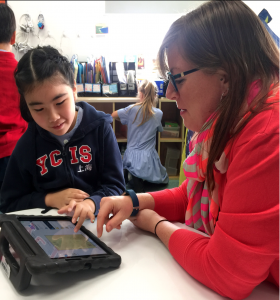
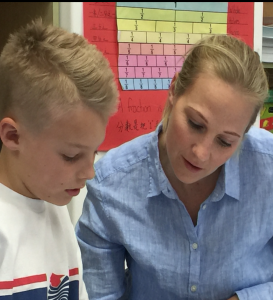
 Parent: “What did you do at school today?”
Parent: “What did you do at school today?”